Returning after 15 years to sylvan Shantiniketan, declared a UNESCO World Heritage site last week, its core vision to fuel the arts and philosophy continues to thrive, amidst newer walls and unspoken boundaries
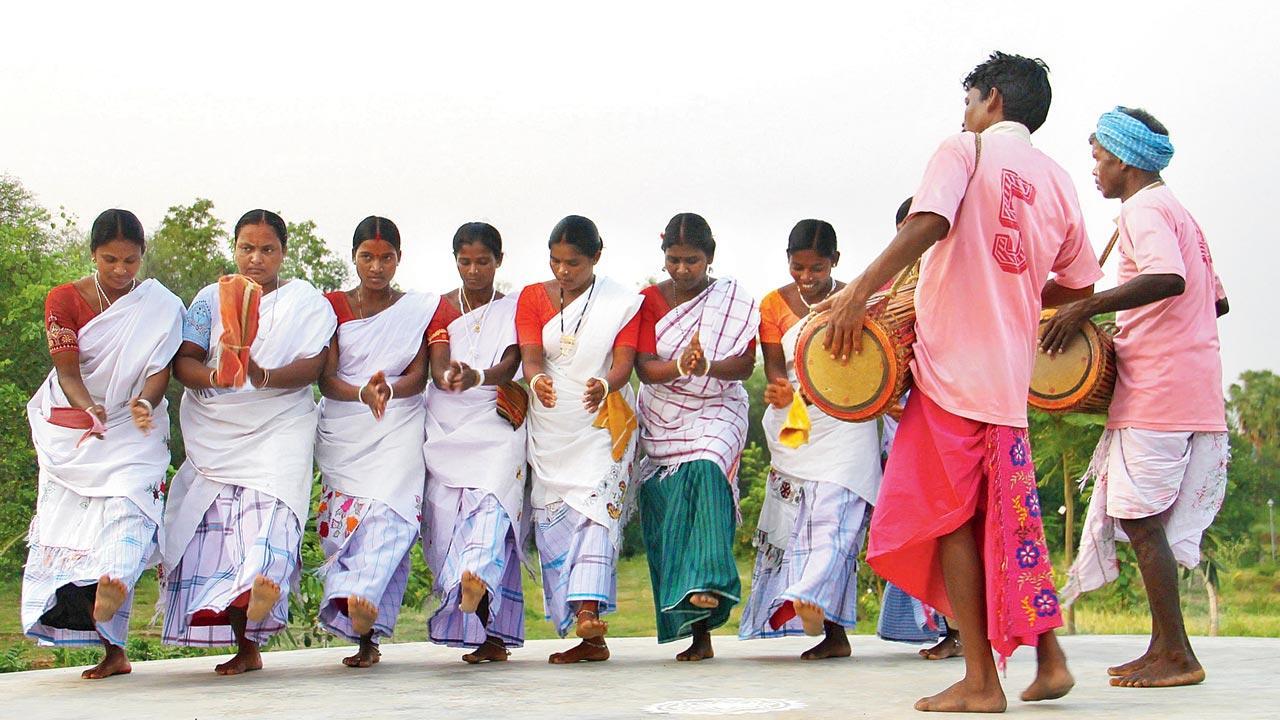
Moram Earth represents ‘responsible tourism’ which includes the involvement of local communities, use of indigenous produce, and protection and conservation of heritage
Ancient & Historical
Tour & Taste
Relaxing
Educational
Adventure
ADVERTISEMENT
Bolpur, West Bengal: With childhood memories of annual visits to the winter Poush Mela marking the harvest season, and the Basanta Utsav celebrating spring, this writer has long hoped to return to Shantiniketan, where Rabindranath Tagore founded the Vishwa Bharati University. This last week, after it was included in the UNESCO World Heritage list, we found reason enough to travel to the university town, originally established by Tagore’s father Maharshi Devendranath Tagore, in Bolpur in West Bengal’s Birbhum district.
On a Sunday morning, after a quick cuppa, we headed for Shantiniketan by car. Bolpur is about 160 kilometres from south Kolkata, a distance, Google told us, could be covered in five hours. Sunday morning meant fewer cars on the road; we were soon on the Vidyasagar Setu with the Hooghly flowing below. There are trains too from Kolkata’s Howrah and Sealdah stations that take you to Shantiniketan’s Bolpur station in under three hours—on previous trips, one recalls Rabindra Sangeet playing from the loudspeakers at the train station, effectively transporting you into the poet’s world.
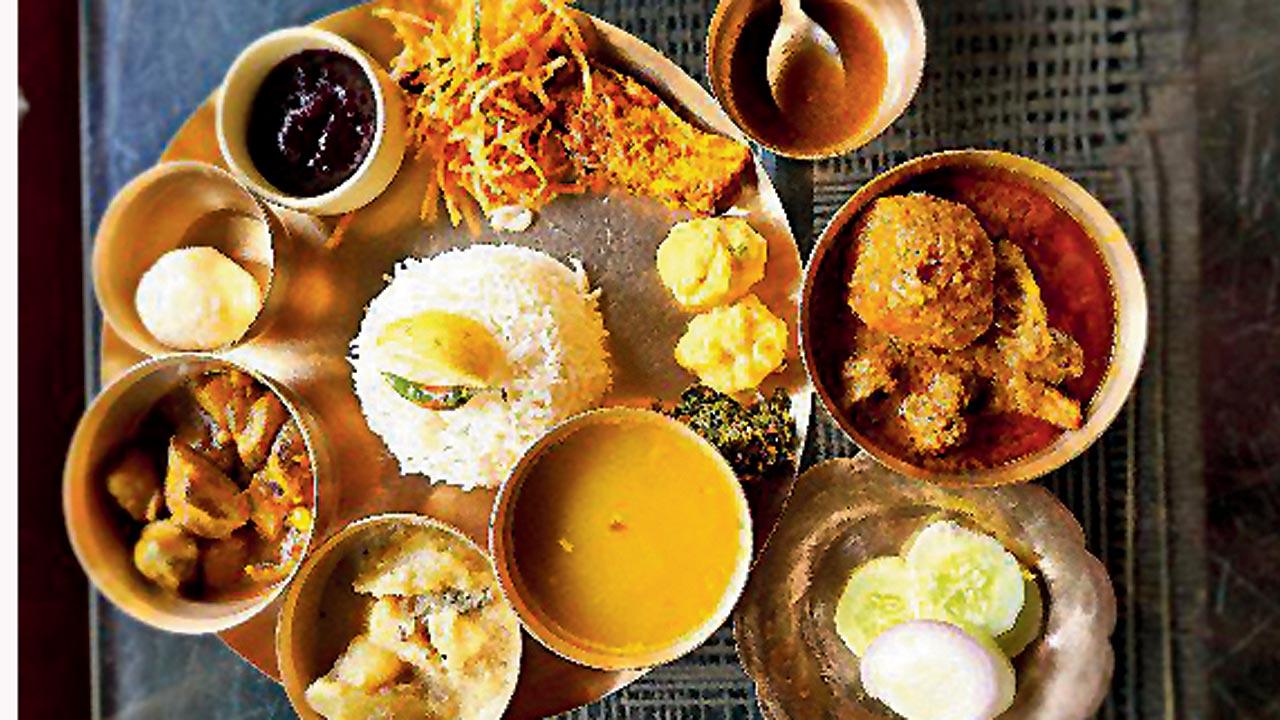 A home-cooked mutton meal at Moram Earth
A home-cooked mutton meal at Moram Earth
After a wholesome breakfast of aloo paratha at the Azad Hind Dhaba at a Bharat Petroleum Pump in Gopalpur, we were back on the Durgapur Expressway (NH19), glad that we chose to travel at this time of the year, when the fields on either side are dense with kash phool (kans grass), signalling autumn and the coming of the goddess in Bengal. With only one more pit-stop on the way—at Saktigarh for a box of its famous lyangcha sweets—we were in Tagore’s university town by lunch time.
Established in 1921 by the Nobel Laureate, the Viswa Bharati University has for years attracted visitors, holding an exalted place in the Bengali imagination.
The Rabindra Bhavana museum is a good place to start, introducing the visitor to Tagore’s manuscripts, correspondence, paintings and sketches, books and journals, photographs, items used by him, and a replica of the Nobel Prize, which was stolen in 2004. Then, there are the stately Tagore houses on the Uttarayan complex, the Ashram complex with the Shantiniketan Griha and the stained-glass prayer hall, and hallowed institutes of the university like Kala Bhavana, Sangit Bhavana and Bhasa Bhavana, many of these decorated by celebrated artists like Ramkinkar Baij and Nandalal Bose.
 Mitali Homestays combines influences of the Bengal style with its terracotta-tiled terraces with those inspired by Mediterranean and Moroccan architecture
Mitali Homestays combines influences of the Bengal style with its terracotta-tiled terraces with those inspired by Mediterranean and Moroccan architecture
Until a few years ago, visitors were allowed entry into the various schools and structures of the Ashram complex. After the COVID-19 outbreak, however, the university had locked the gates to the two main entrances, one before the Upasana Griha, and the other opposite Rabindra Bhavana. Security guards continue to turn away visitors. “Tagore’s philosophy was to break walls and here we are building walls and creating boundaries,” Bidisha Tagore, an ex-student of Kala Bhavana and proprietor of one of Shantiniketan’s new homestays, tells us. “You can’t block people out of their own heritage. There are these stunning murals by Somnath Hore and Nandalal Bose, grand frescoes by KG Subramanyan at the Kala Bhavana—won’t people get to see them anymore?” she asks. “There was a time when people could visit the gardens at Ratan Kuthi [erected in 1924 out of a donation by Trustees of Sir Ratan Tata to be used as a residence for scholars who stayed and worked at Shantiniketan]. There is no access to it. There are old dilapidated hostels, properties gifted to the university which have not been restored. We are hopeful that with the UNESCO recognition, things will open up. New funds might lead to repairs.”
Amar Kutir, located on the banks of the Kopai River, was established in 1927 by revolutionary Sushen Mukherjee and is a cooperative unit that produces leather goods and kantha stitched saris among other crafts. Sonajhuri haat, organised inside the ‘Sonajhuri’ forest whose trees shed their ‘golden’ flowers in winter, sells handmade jewellery, leather and handloom bags, embroidered sarees, wicker chairs, and spiced and pickled wood apples and guavas. There are also local Baul singers and Santhali tribes dancing Lungi Panchi dance.

The Santhal Family made by the artist Ramkinkar Baij in 1938, is the first modernist public sculpture in India, currently placed in the compound of Kala Bhavana in Shantiniketan
There isn’t a dearth of places to stay when visiting Shantiniketan (see box).
About 2 km north of the Viswa Bharati campus, surrounded by flowering trees and a lush fruit and vegetable garden, is Mitali Homestays. This is a large family home, originally built in 1968. Sushil Dey, an ICS officer along with his architect wife Indira had returned to Bengal after a long period abroad in New York and Rome, in order to enjoy the peaceful rural surroundings of Shantiniketan. They built a home that combined influences of the Bengal style with its terracotta-tiled terraces, and windows and arches inspired by Mediterranean and Moroccan architecture. “We have been growing organic produce here for 15 years, which are used for the guests’ meals and distributed among the staff. There is also a boutique [DesignAsia] with clothes, jams, jellies and soaps made by the Mitali staff who have been working with us for a long time,” hosts Krishno and Sukanya Roy tell us.
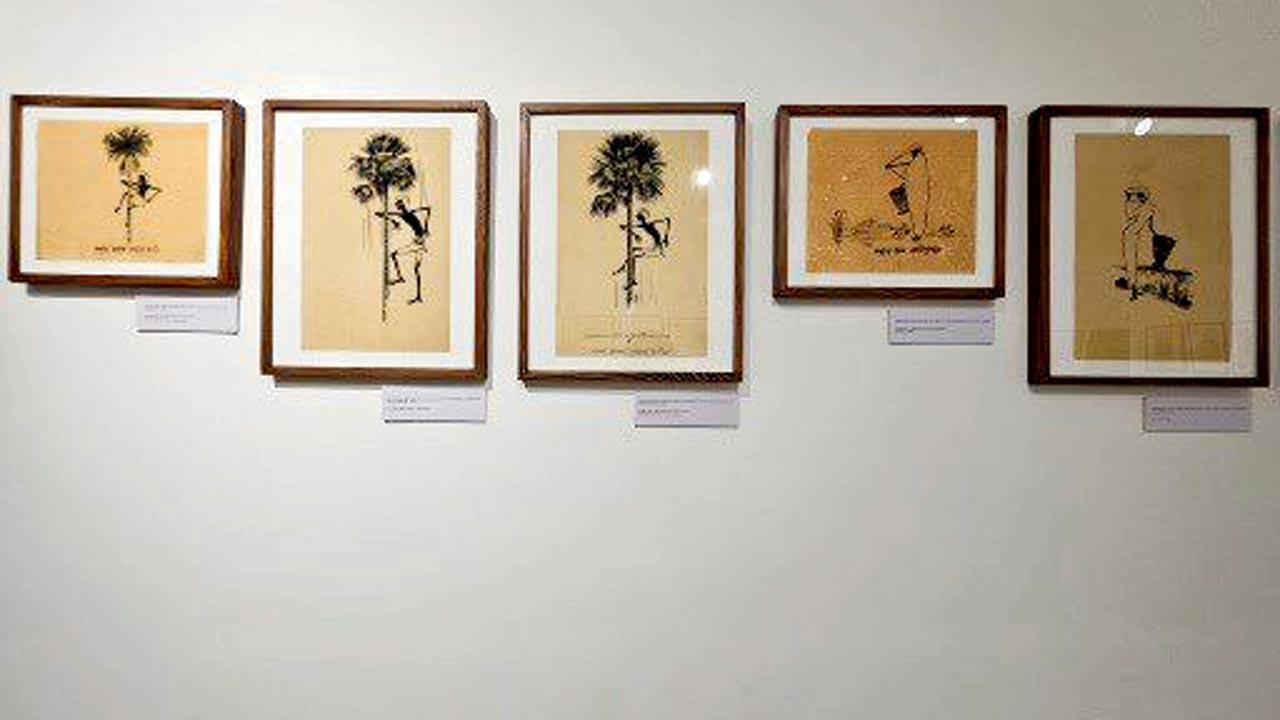 The exhibition Vision & Visuals: Jatindrakumar Sen showcases cartoonist Jatindrakumar Sen’s illustrations for the stories written by Bengali humourist Rajshekhar Basu better known by his pen name Parashuram
The exhibition Vision & Visuals: Jatindrakumar Sen showcases cartoonist Jatindrakumar Sen’s illustrations for the stories written by Bengali humourist Rajshekhar Basu better known by his pen name Parashuram
At Moram Earth, which is 10 km from Bolpur station, the nearest train station being Prantik which is 6 km away, one is greeted with the traditional tribal welcome known as “daram”. Most of the staff members at the resort are from the tribal community.
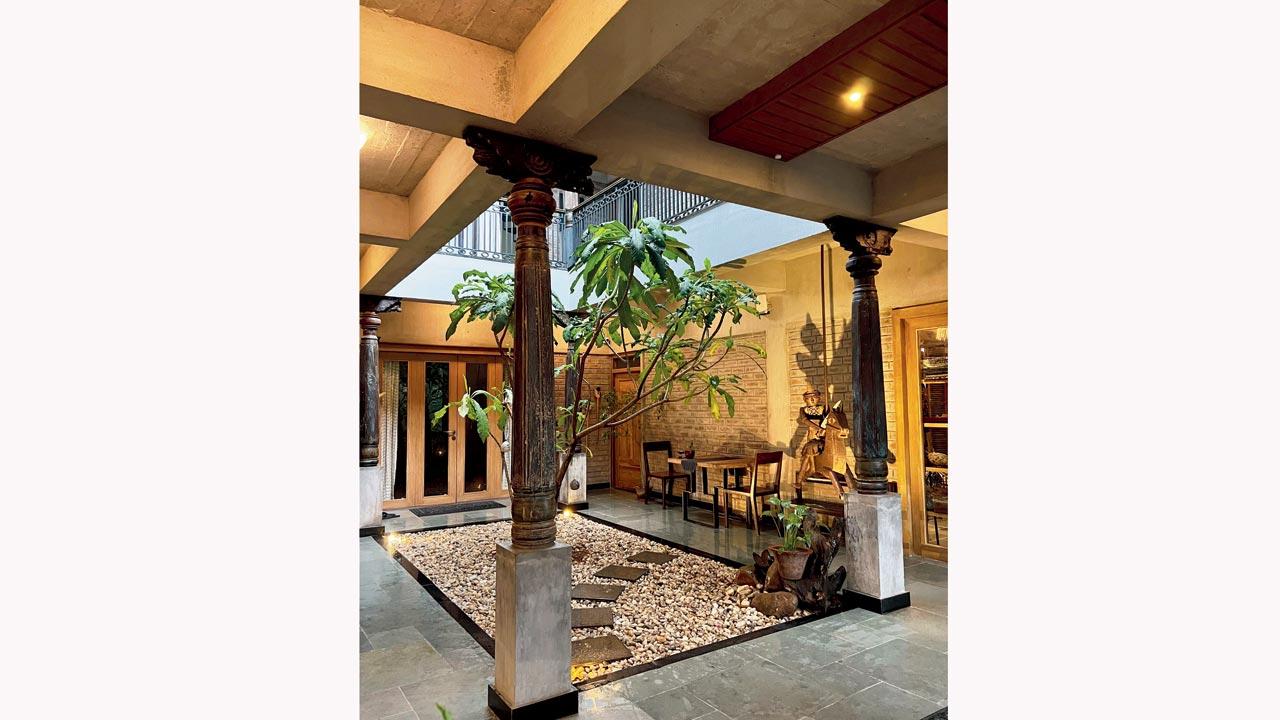 Amoli opened two years ago to make up for the dwindling meeting points in Shantiniketan
Amoli opened two years ago to make up for the dwindling meeting points in Shantiniketan
Moram meaning “red soil” had its beginnings in an NGO called Art Illuminates Mankind that Gopal Poddar and Sonali Chakraborty founded 20 years ago, working with folk and tribal artists of the country. They felt the need for a permanent place, where they could work on design and community development, and Shantiniketan, given Birbhum district’s rich art and craft heritage, felt like the place to set it up. Started in 2012 as a development-focused initiative, concentrating on the advancement of and employment generation of economically and socially disadvantaged classes and training local artists, they now work with people from 82 villages. “Birbhum is not just about kantha and batik work. There are dozens of other folk and performance arts like dhol, dhaak, leto, bahurupi, chadar badar puppetry, raibenshe and folk literature like kobi gaan, baul gaan, pala and kirtan. When we speak of ‘responsible tourism’ here, it includes the involvement of local communities, use of indigenous produce, and protection and conservation of heritage,” Chakraborty tells us.
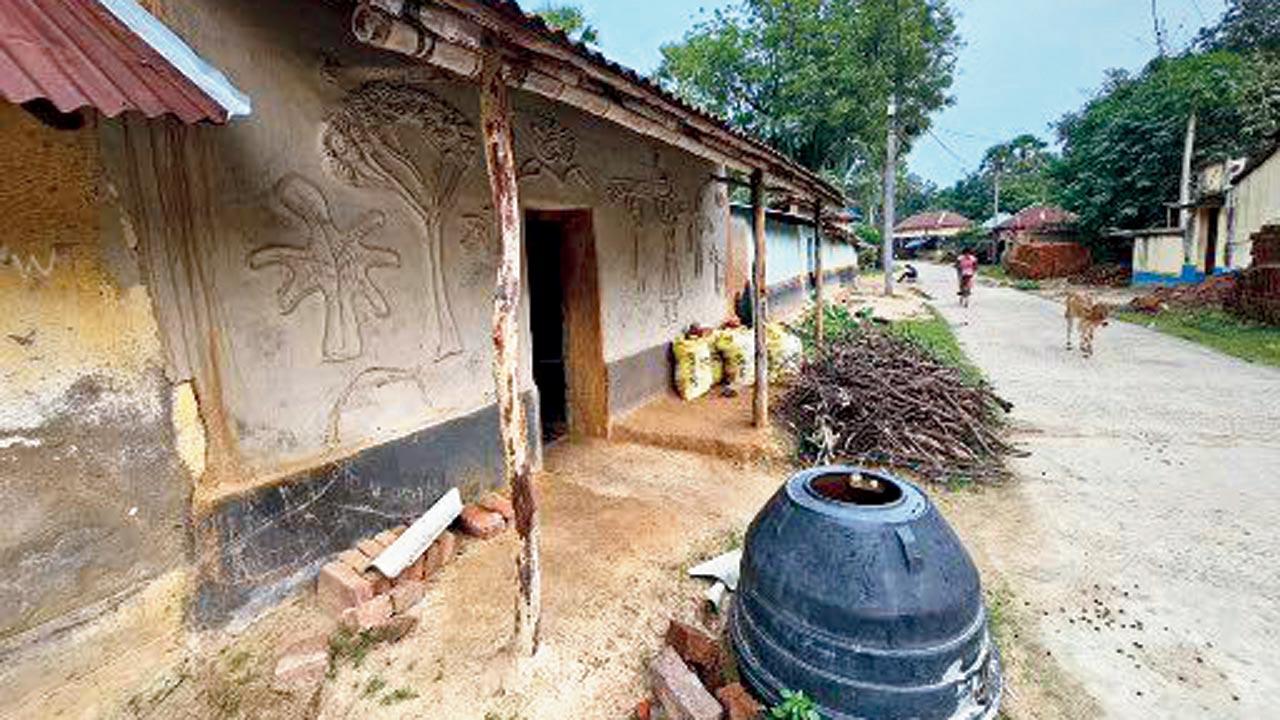 An adivasi village in the vicinity of Shantiniketan in Bolpur
An adivasi village in the vicinity of Shantiniketan in Bolpur
The resort has 14 rooms of different types starting with the traditional ‘matir bari’ or raw mud room. There are a range of activities that guests can participate in from batik, embroidery and pottery workshops and organic farming, to working on the charkha, feeding animals and cooking Santhal food. One wakes up to flute music wafting through the window as a local flautist drops by each morning, while a dotara player visits in the evenings. Swans and turkeys will turn up for the occasional hello during mealtimes and tribal dances and Ayurveda massages can be requested. For guests visiting during the pujas, the hosts plan to guide people through tours of nearly 400-year-old pujas in nearby places like Hatserandi, Siuri and Labpur.
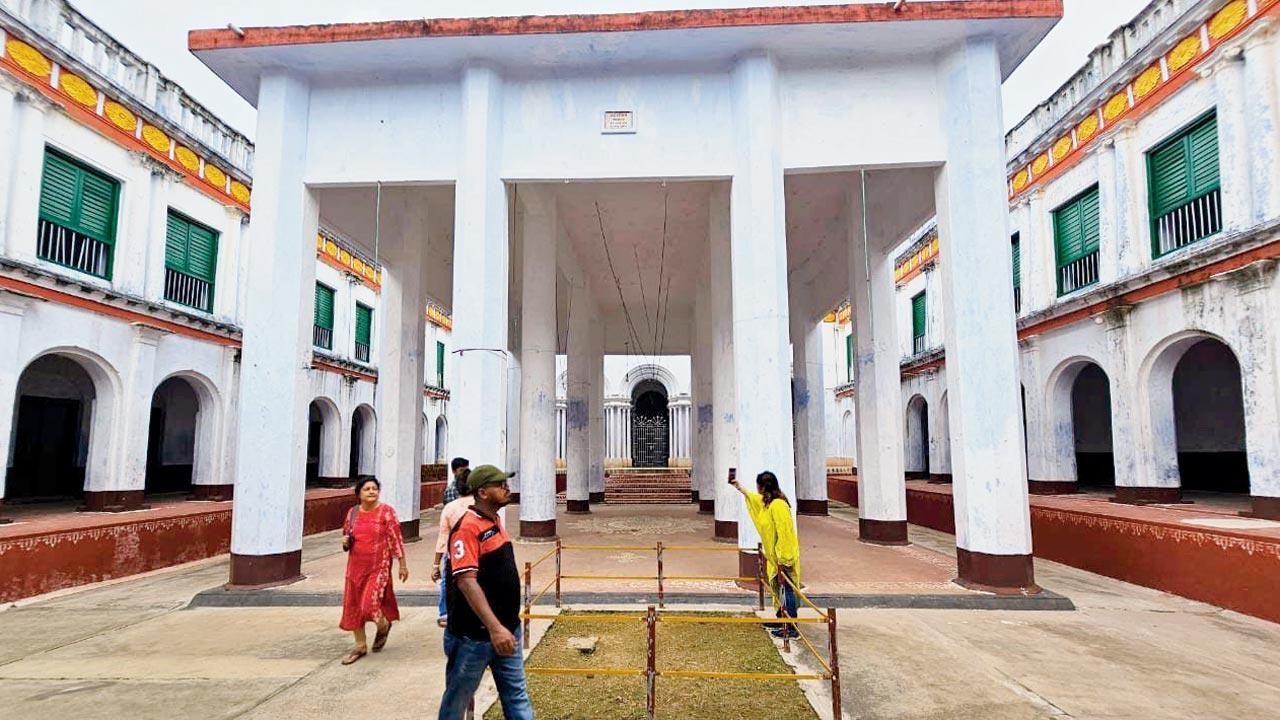 Surul Rajbari is famous for its traditional Durga Puja celebrations
Surul Rajbari is famous for its traditional Durga Puja celebrations
A more recent addition to the eco-inspired homestays in Shantiniketan is Bidisha Tagore and Aloke Ghosh’s Amoli (precious). It has four guest rooms (with balconies, walk-in wardrobe spaces and one room with an open-to-sky shower) and a café. Both Bidisha and Ghosh lived in Mumbai, before opening this homestay two years ago, with a team of locals they had trained. It has become a centre for companionship and interaction with artistes, writers, consuls and other guests visiting from different places. This writer and her accompanying friend ate at Café Amoli, which looked busy and inviting; we selected a dish of garlic prawns with herbed rice and a pork, coconut rice and mango chutney dish out of its mainly continental-style menu, a revamped version of which will be available from October 1.
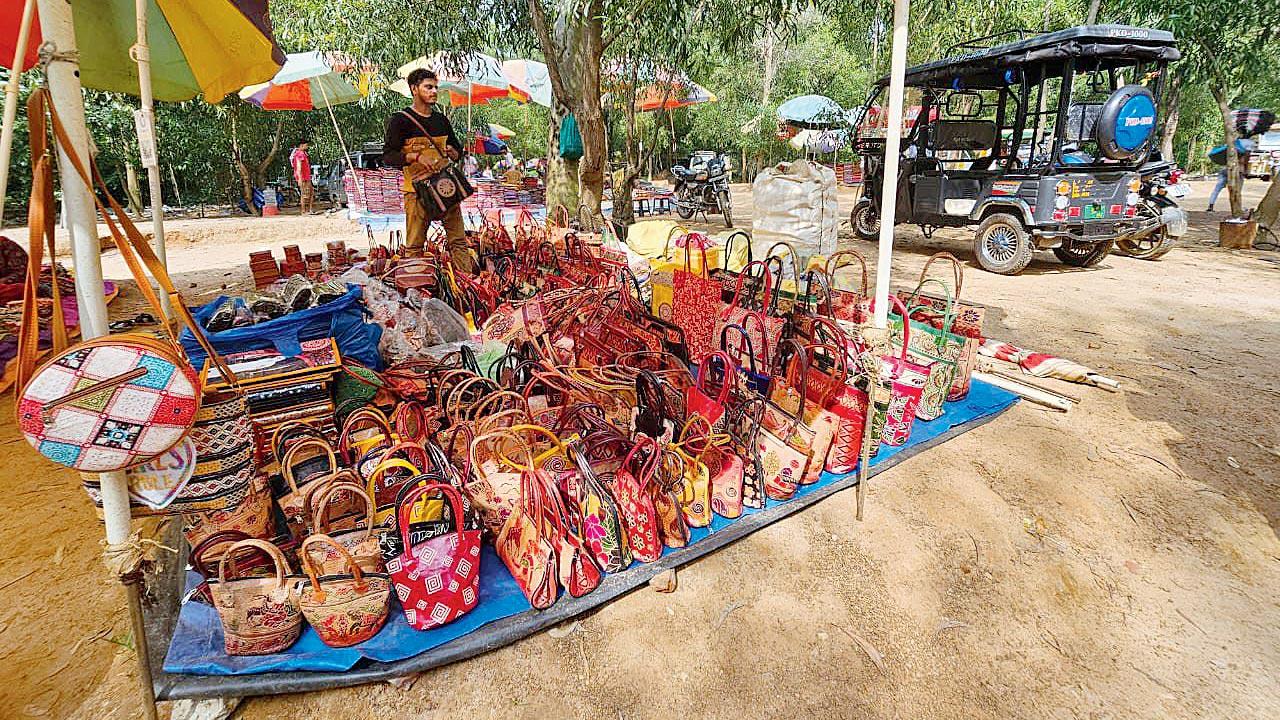 Handmade jewellery, leather and handloom bags, embroidered sarees, wicker chairs, spiced and pickled wood apples, and guavas are sold at the Sonajhuri haat
Handmade jewellery, leather and handloom bags, embroidered sarees, wicker chairs, spiced and pickled wood apples, and guavas are sold at the Sonajhuri haat
“Shantiniketan no longer has those treasured meeting points at the heart of the Shantiniketan village. Amro Kunjo or the Chaiti [which Nandalal Bose had constructed for display of artwork] are no longer accessible. So, this was filling up for that,” says Bidisha, whose father is a descendant of the Tagore family and grew up in Jorasanko in Kolkata.
The establishment’s ethos centres on eco-friendliness and sustainability. The hand-written menus are used to make cut-out Christmas trees, Bidisha tells us, while shelves have been made out of scrap wood. As we sit chatting in her office which doubles up as a store, housing pieces by local artisans and designers, Bidisha, who has worked as an interior designer for close to two decades, points to refurbished furniture repurposed from the family’s former Shantiniketan home. A nature-centric spirit, tied to harmony and preservation, after all, has always been key.
Where to eat
Kasahara: Situated within the university campus, the café is a tribute to Kimtaro Kasahara, a Japanese artisan, one among a team of Buddhist artisans commissioned by the Government of India to restore the Bodh Gaya temples, who later taught woodwork and gardening to students in Sriniketan, the rural reconstruction centre of Viswa Bharati, and designed the Japanese-style gardens in the Uttarayana complex. They offer quick and hearty meals, ranging from luchi torkari, biryani and fish thalis to tasty and popular Chinese items like fried rice, chowmein and chilli chicken.
Bonolakshmi: Those looking for a home-style Bengali meal should stop at the Bonolakshmi canteen. While they offer popular Bengali fare like shukto, alu posto and kosha mangsho, Bonolakshmi is also the centre of a small cottage industry and is famous for its ghee, pickles and mango and guava jams available at their store.
Hidden Gems
Vision & Visuals, Jatindrakumar Sen: This exhibition, on view till October 19 at Arthshila, Syambati in Shantiniketan, showcases cartoonist Jatindrakumar Sen’s illustrations for the stories written by Bengali humourist Rajshekhar Basu better known by his pen name Parashuram. Curated by sculptor KS Radhakrishnan, it displays original artworks for works like Birinchi Baba (the short story on which Satyajit Ray’s 1965 film Mahapurush was based), Gaddalika and Bhushandir Mathe.
Surul Rajbari: This is a nearly 300-year-old rajbari next to temples with superb terracotta carvings built by a businessman named Srinivas Sarkar in the 1750s. Descendants of the family still reside in a section of the palatial home, which is famous for its traditional Durga puja celebrations.
Srijani Shilpagram: A cultural village of the Eastern Zonal Cultural Centre, it has been functional since 2009 with nine museums in the form of nine cottages incorporating traditional architectural features and containing handicrafts of the nine EZCC member states.
 Subscribe today by clicking the link and stay updated with the latest news!" Click here!
Subscribe today by clicking the link and stay updated with the latest news!" Click here!







